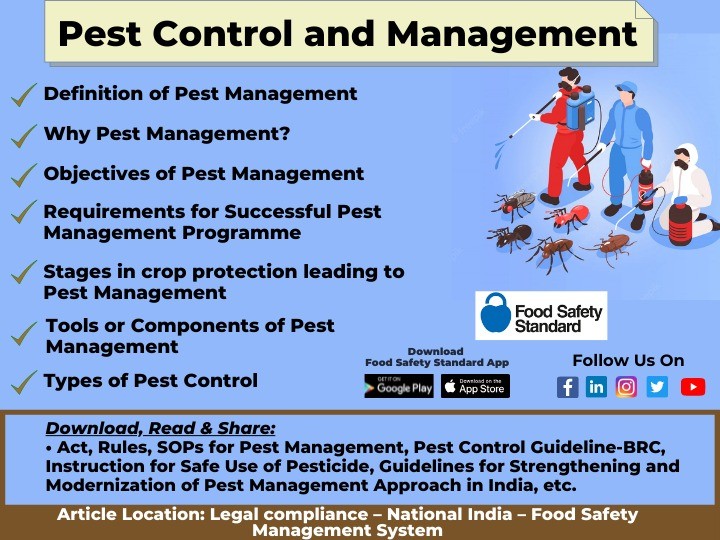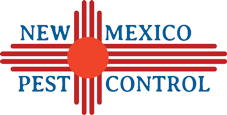The Greatest Guide To Pestwise
The Greatest Guide To Pestwise
Blog Article
The Ultimate Guide To Pestwise
Table of ContentsPestwise Can Be Fun For EveryoneThe Pestwise PDFsThe Of PestwiseFacts About Pestwise RevealedLittle Known Questions About Pestwise.Getting My Pestwise To WorkPestwise for Beginners

Q. Specify "incorporated insect management" (IPM) and listing a number of feasible control techniques that might be made use of in an IPM strategy. A. Integrated parasite administration is the combining of proper insect control tactics right into a single strategy to decrease parasites and their damage to an acceptable level. Pest control techniques might consist of: host resistance, organic control, cultural control, mechanical control, cleanliness, and chemical (pesticide) control.
The 7-Second Trick For Pestwise
What can you do to keep the parasites you are attempting to control from becoming resistant to the pesticides you utilize? A. Parasite resistance can be lowered by utilizing incorporated parasite management and rotating the kinds of chemicals used.
Insects are a crucial risk to the farming company, and incorporated insect management helps growers address and minimize these risks. Integrated pest management uses a number of methods in complex, thus being a more efficient service to the issue. Wasp Nest Removal. Particularly, removing hostile chemical techniques enables minimizing harm to individuals and the setting by utilizing all-natural and more secure alternatives rather
Not known Details About Pestwise
The goal of incorporated bug management is to decrease this injury and control acceptable infestation degrees as opposed to eradicate all undesirable populations. This is why it is necessary to recognize what steps are justified in each instance and usage aggressive ones just when other integrated monitoring methods don't function. Integrated management reduces the negative repercussions of a non-IPM approach, and the primary advantages of IPM Conveniences of IPM.
A right understanding of the infestation range identifies if the trouble ought to be addressed. are the following parts of an IPM program because it is very important to understand if recommended you read the microorganisms make prospective threats and select the incorporated administration options or the certain chemical use. mean to reduce invasions by using different agronomic techniques.
The Pestwise Statements
if avoidance was ineffective. Integrated administration alternatives in an IPM program beginning with more secure to more aggressive ones. For instance, target or broadcast chemical spraying may follow manual elimination or capturing that hasn't aided. The prior incorporated management aspects aid recognize just how to intend and implement an IPM program step by step: Monitor your plants consistently.

Among others, IPM cultural approaches include the following area monitoring techniques: dirt treatment; choice of appropriate plants; crop rotation; interplanting or strip cropping; option of planting dates; weed control; use of trap plants. Positive soil problems speed up plant growth, and vigorous crops are a lot more immune to problems. Healthy and balanced seedlings and seeds predetermine successful crop advancement, so it is crucial to choose pest-free planting material with strong origins.
, which is also made use of in the incorporated insect monitoring system. Conversely, infestations raise when plants of the same plant type or household grow together.
Potato beetles can hurt expanding potatoes, in addition to tomatoes. Planting trap plants in patches is another alternative for IPM intercropping. This incorporated bug administration technique suggests attracting pests to details plants and after that managing them with chemical or mechanical strategies. Particularly, you can expand soybeans as trap plants for Japanese beetles.
More About Pestwise
Barriers are normal instances of physical IPM techniques. Fully grown pests or their eggs and larvae are accumulated by hand and ruined.

Department of Plant Sciences. This incorporated monitoring method implies a common means of destroying pests by predators, parasitoids, microorganisms, and other organic control representatives (also known as hostile microorganisms). The function of organic control in IPM is to.
Pestwise for Dummies
With time, their population ended up being an actual hassle to farmers along with aboriginal kangaroos or dingoes. The walking stick toad is one more case illustrating integrated biological control failing hereof when it declined to hunt the target species and ended up being an insect itself. Parasitoids develop on or within their hosts to ultimately kill them after growing.
Report this page